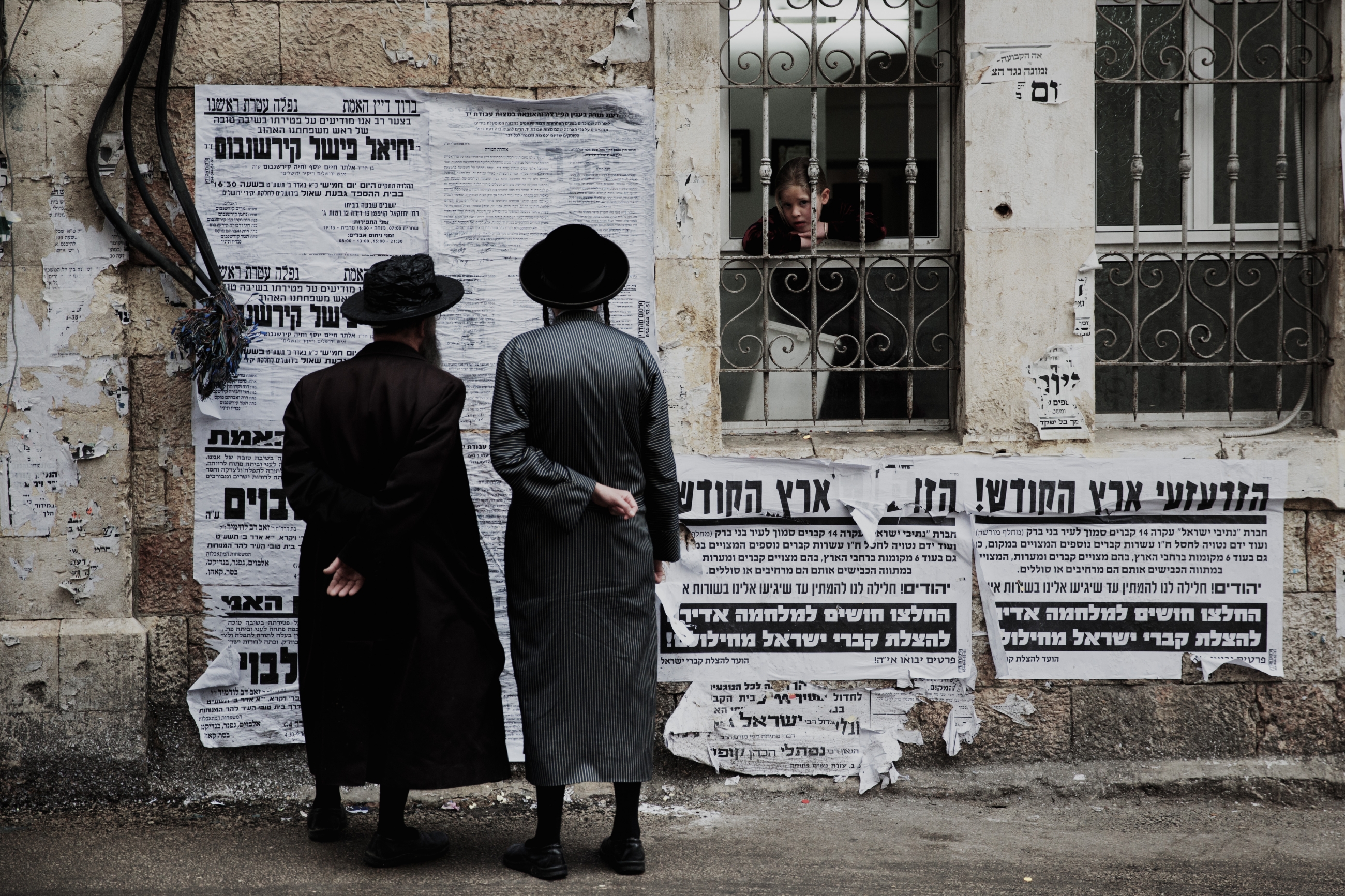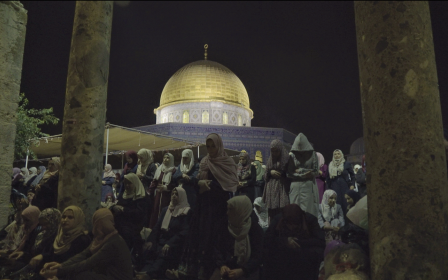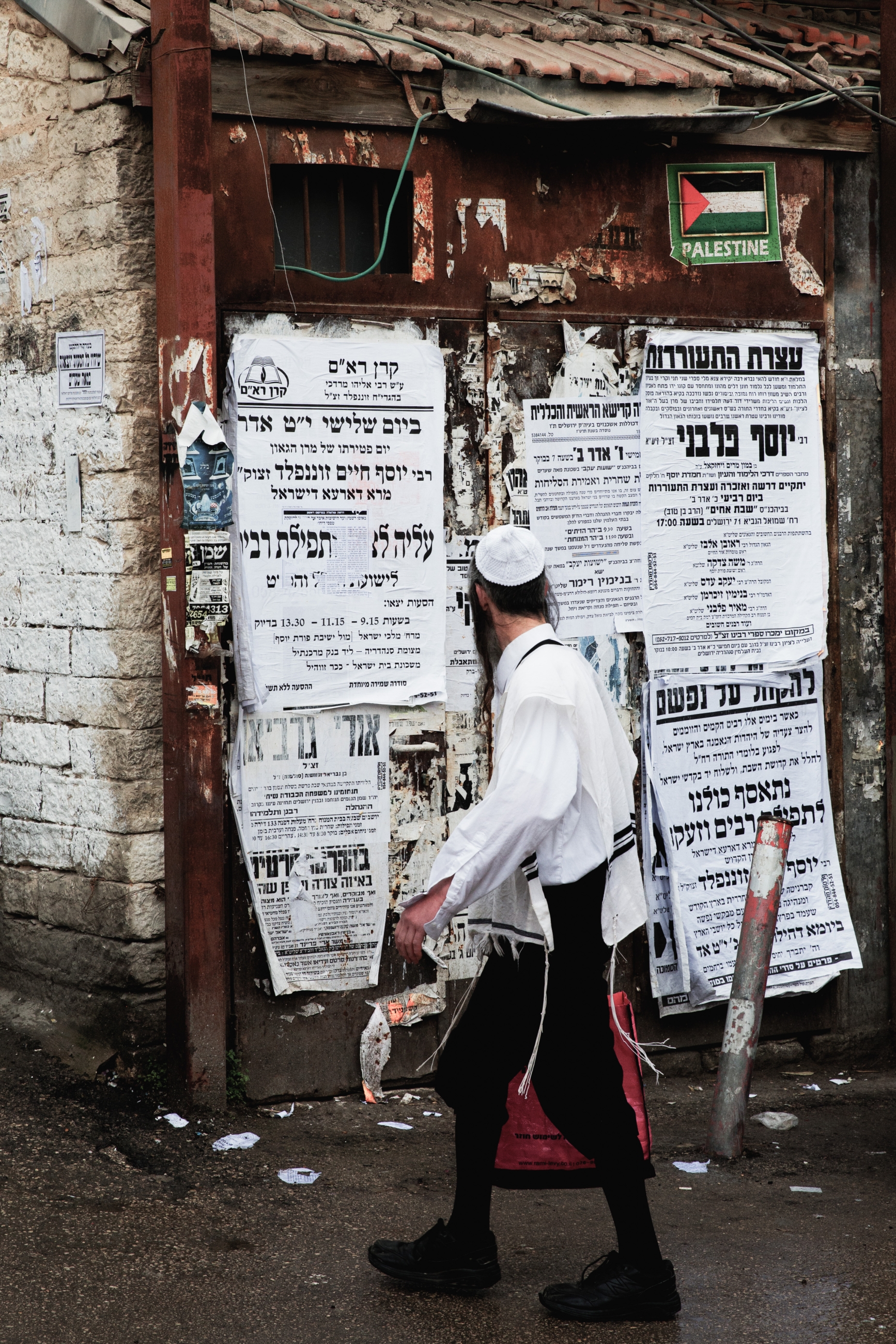
In pictures: The ultra-Orthodox Jews who back Palestine
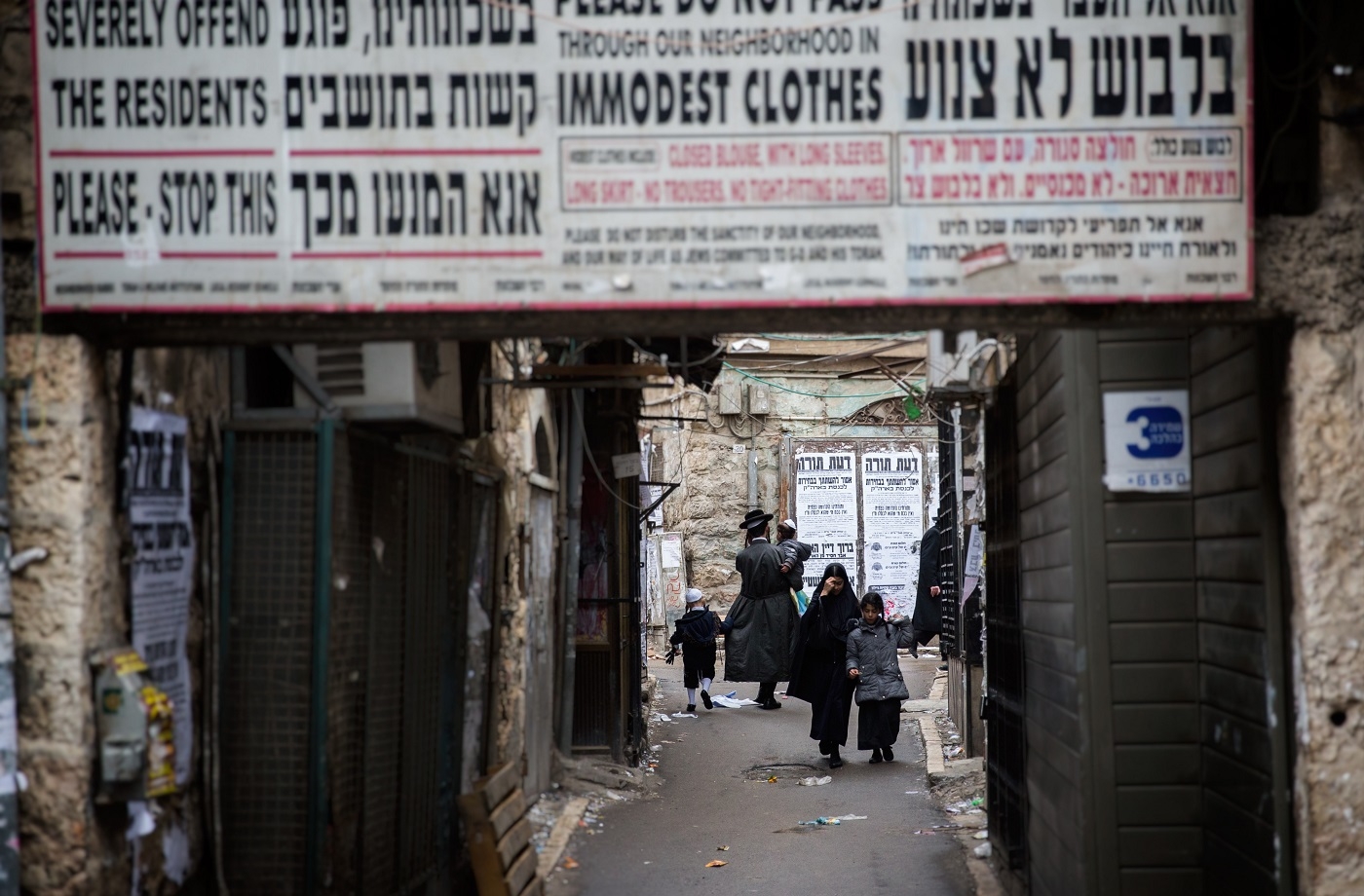
The neighbourhood of Mea She’arim, built in 1874, is near the Old City of Jerusalem (it is named after its “100 gates”). Today its narrow streets are a stronghold for the Haredim, ultra-Orthodox Jews, whose name means “God-fearing” in Hebrew. Men wear long black coats, their hair styled in side curls known as “peiyes”: women wear long skirts. Alarmed by the modern world, the Haredim refuse assimilation, sticking to halakha, traditional Jewish law: the neighbourhood can seem inhospitable to outsiders (MEE/Laurent Perpigna Iban)

Notices posted by residents near the entrances to Mea She’arim recommend that visitors turn around: tourists carrying cameras are often driven away. The Sikrikim are community lookouts who watch for any perceived threats to their beliefs: their name is inspired by the Sicarii, who tried to expel the Romans during the first century. Pictures of the neighbourhood are usually taken with hidden cameras, as they were for this photo essay (MEE/Laurent Perpigna Iban)

Clashes occur on a regular basis in Mea She'arim. In May, firefighters were attacked when the Israeli flag on their vehicle was pulled off. A few weeks earlier, the effigy of an Israeli soldier was hanged and burned during the Jewish celebration of Purim. The Israeli flag is regularly burned: soldiers are routinely driven out (MEE/Laurent Perpigna Iban)
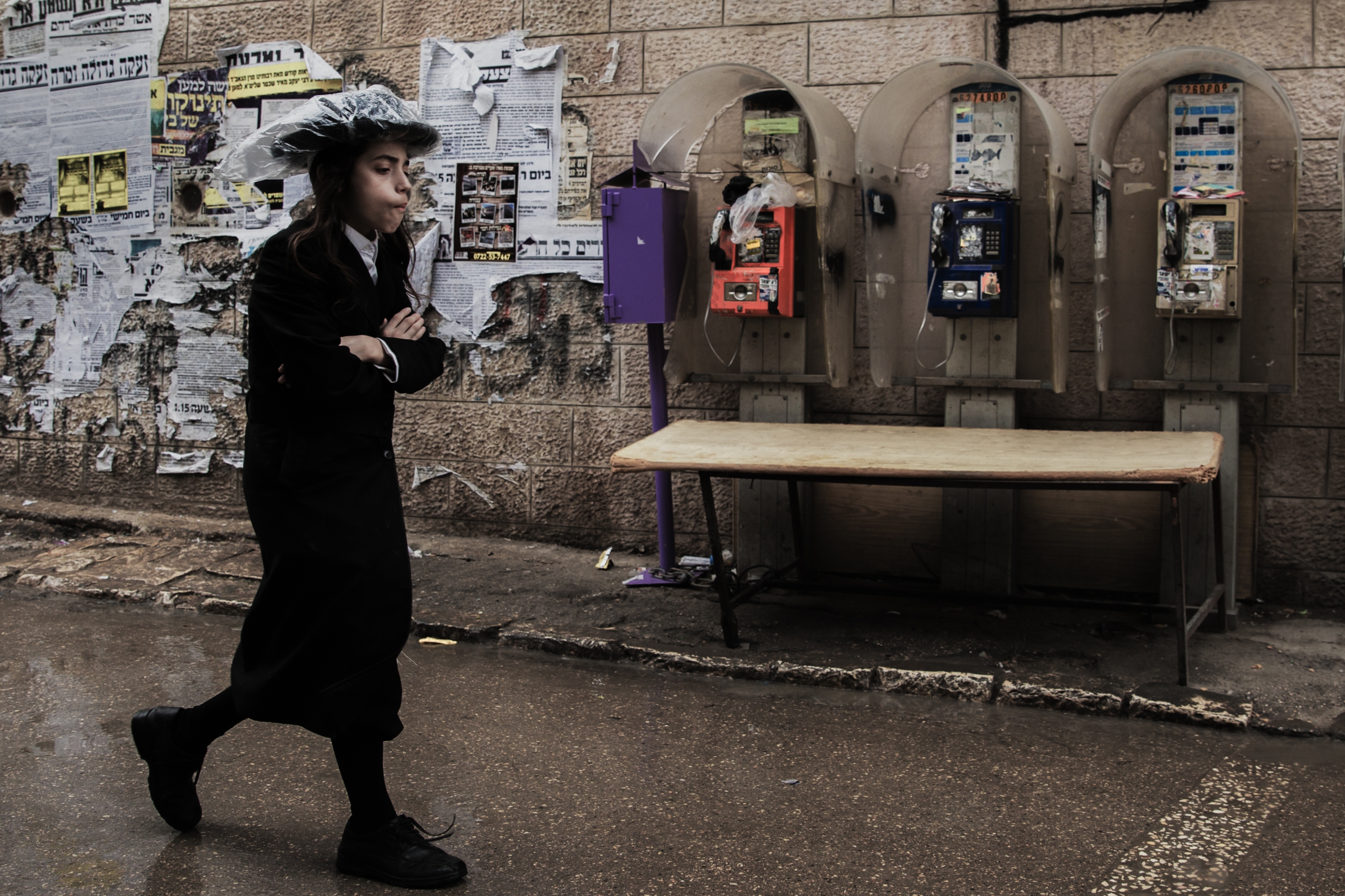
In Mea She'arim there are no cafes, theatres or restaurants. TV, radio, photography and the internet are also prohibited. Public telephones are a reminder that mobile phones are in short supply, their purchase subject to rabbinic authority (MEE/Laurent Perpigna Iban)

Women in the ultra-Orthodox community come under the authority of husbands, rabbis and religious law. While gender segregation is prevalent – including separate queues at some shops – women run the household and are in charge of educating children. In Mea She'arim, Jewish women sometimes wear the shal or frumka (left in photo), a full veil akin to the Muslim burqa (MEE/Laurent Perpigna Iban)

The Haredi community consists of several groups: the Hasidic Jews of eastern Europe, who advocate communion with God through song and dance; the Sephardic Jews from the Iberian peninsula; the Mizrahi Jews, descended from Middle Eastern and North African Jewish communities; and the Misnagdim, Orthodox Jews who follow what is referred to as a “Lithuanian” style of life and learning (MEE/Laurent Perpigna Iban)
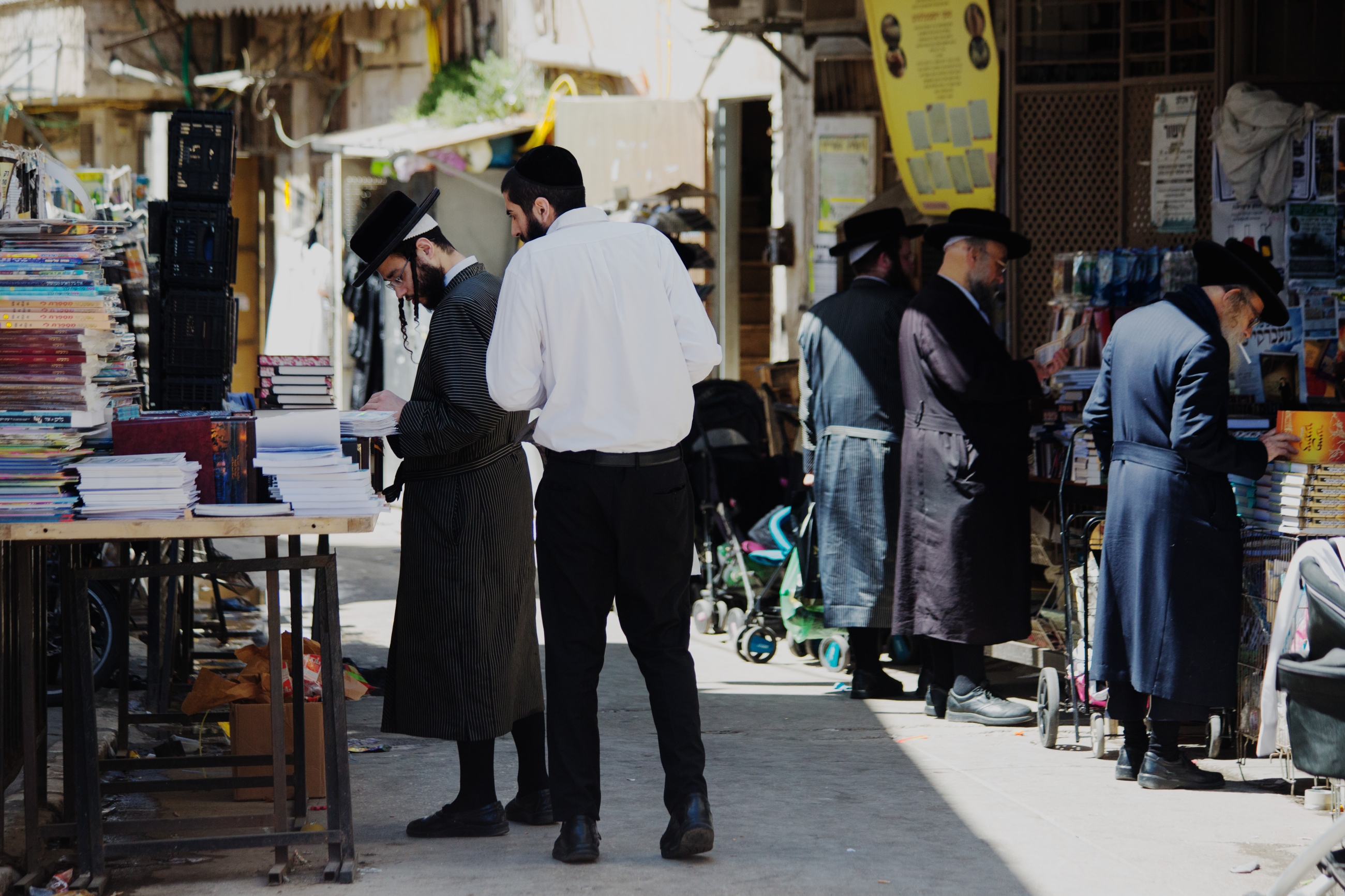
The Haredim may devote their lives to reading the holy scriptures as well as sustaining the community. The only book shops and stalls specialise in religion (MEE/Laurent Perpigna Iban)

The streets are full of pashkevils ("anonymous posters"), posted on a near daily basis by residents to communicate. Mostly they refer to the Torah and community issues: occasionally they become political, as in the photograph above. Before the April 2019 elections, some rabbis urged the community not to vote: Mea She’arim’s inhabitants consider the Israeli government unlawful as “the Messiah alone can restore the Kingdom of Israel”. As such, Zionism goes against their beliefs (MEE/Laurent Perpigna Iban)

Mea She'arim is busy on Fridays, as shoppers head for the shops before they close at sunset. The neighbourhood empties as residents head for the Wailing Wall to celebrate the Jewish holy day of rest. But drivers risk rocks being thrown at their cars if they enter: driving, as well as using electronic devices, is prohibited on Shabbat (MEE/Laurent Perpigna Iban)
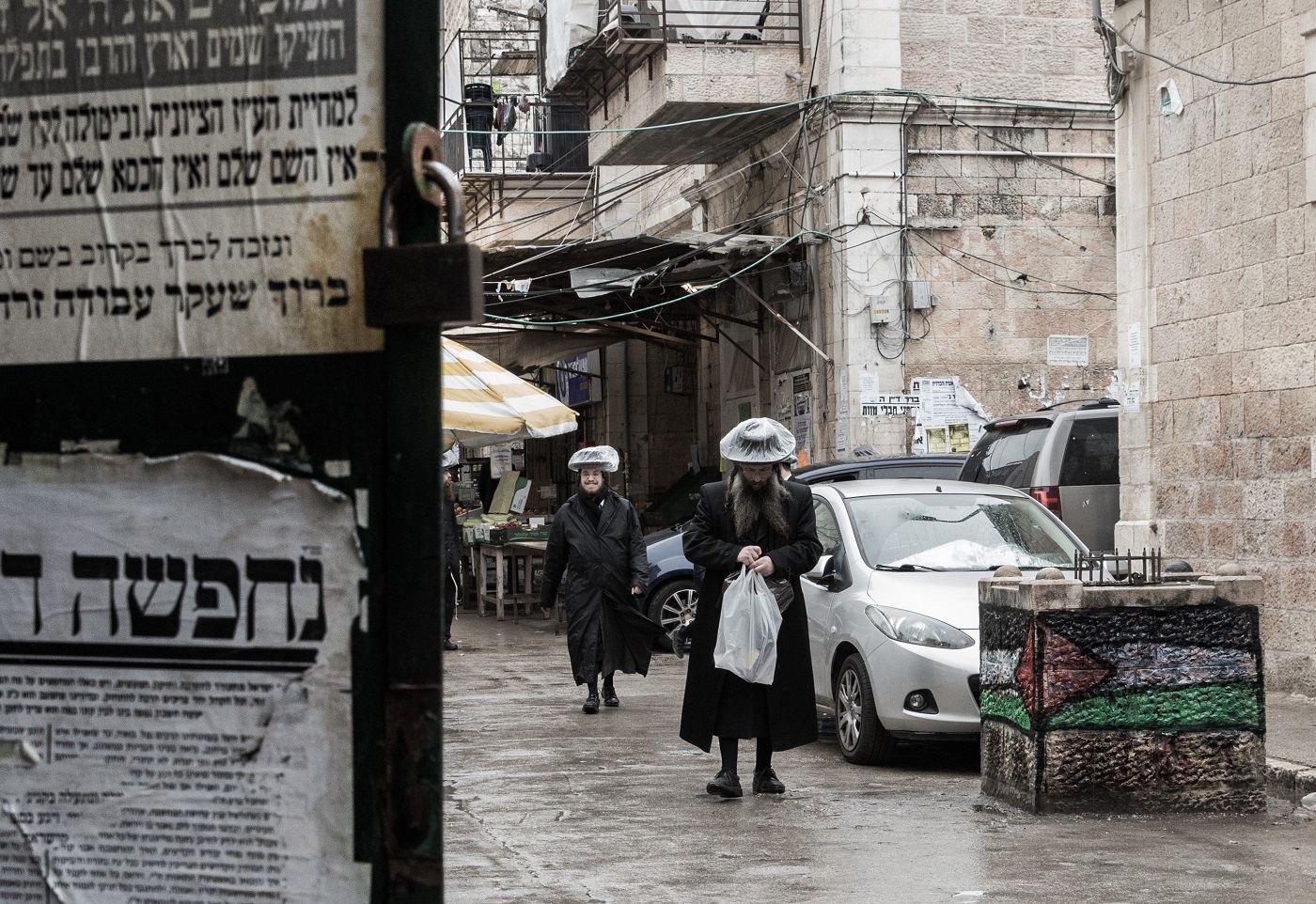
Some residents support the Palestinian cause. Founded in 1938, members of the group Neturei Karta (“Guardians of the City” in Aramaic), reject Israeli nationality, refuse to register their children with the authorities and openly call for Israel to be dismantled. Active across many countries, it routinely drapes Mea She’arim with Palestinian flags: here, one is painted on a concrete post on the right (MEE/Laurent Perpigna Iban)

Israel’s ultra-Orthodox communities represent roughly 12 percent of the country’s population - nearly one million people. Although Mea She'arim's residents refuse to tolerate outside interference, other Haredi movements have worked with the state, including the religious political parties Shas and Degel HaTorah. A key non-negotiable expectation is exemption from mandatory military service (MEE/Laurent Perpigna Iban)
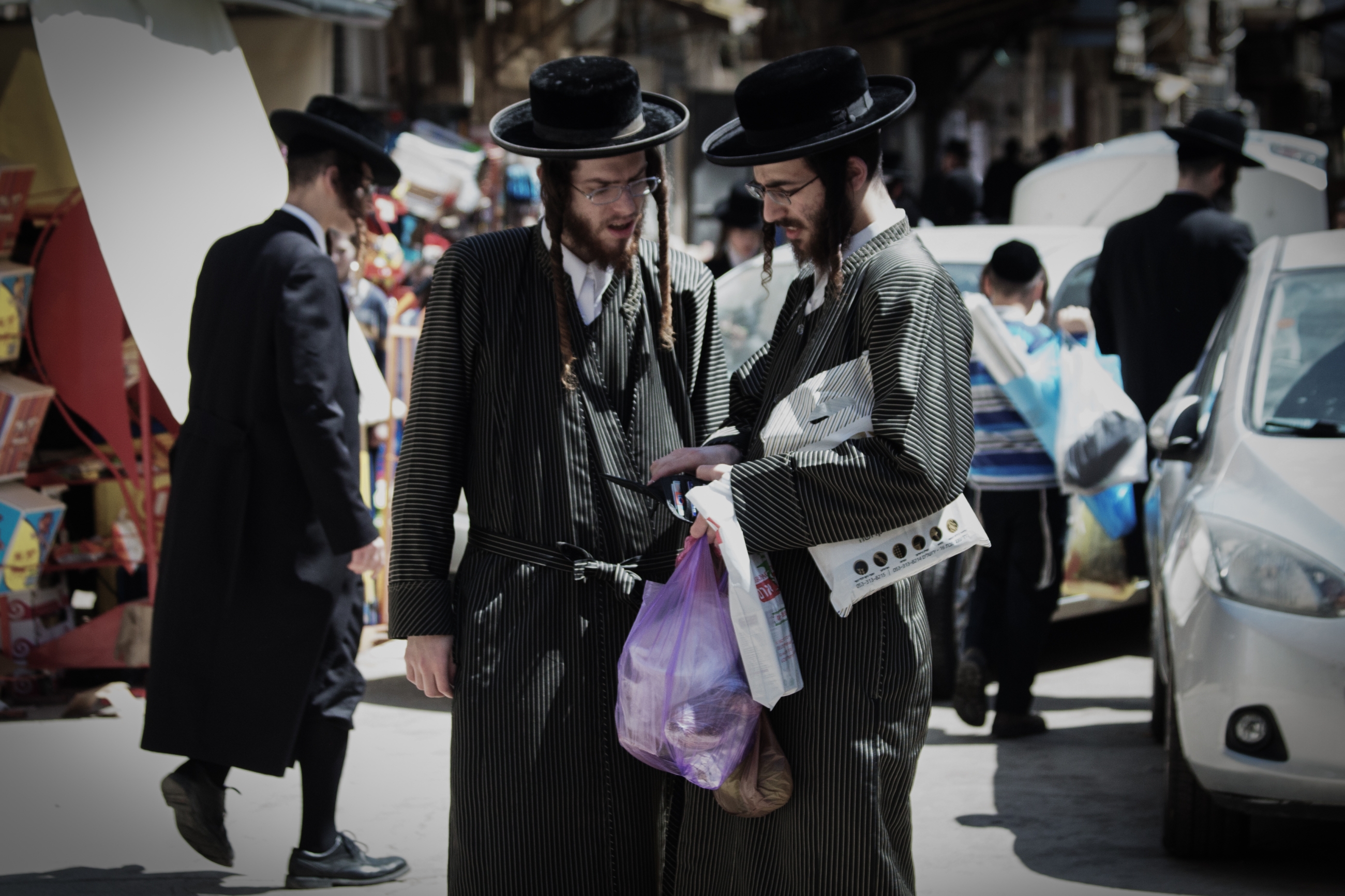
Military units have been formed so the Haredim can integrate, but only 10% of the 30,000 men are eligible join each year. The residents of Mea She'arim are represented by the United Torah Judaism coalition (Yahadut HaTorah- UTJ), although many are reluctant to become involved with Israeli politics. The issue of military service has had wider consequences. After the April 2019 election, Prime Minister Benjamin Netanyahu was unable to form a coalition, caught between ultra-Orthodox parties and those who wanted to increase the number of Haredim conscripts. Fresh elections have been called (MEE/Laurent Perpigna Iban)

Other large ultra-Orthodox communities include Gueoulah in Jerusalem, the city of Beit Shemesh and Bnei Brak in northeast Tel Aviv. The birth rate in such regions is high, at just under seven children per woman. According to figures published by the Israel Democracy Institute, it is estimated that about 27 percent of the Israeli population will be of ultra-Orthodox origin by 2050 (MEE/Laurent Perpigna Iban)
This article is based on one which originally appeared in French on middleeasteye.fr
Middle East Eye delivers independent and unrivalled coverage and analysis of the Middle East, North Africa and beyond. To learn more about republishing this content and the associated fees, please fill out this form. More about MEE can be found here.


